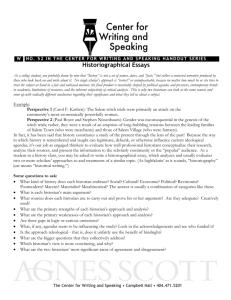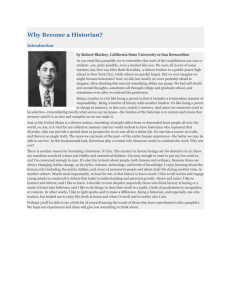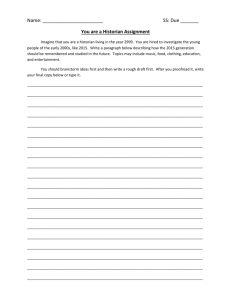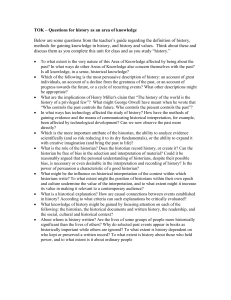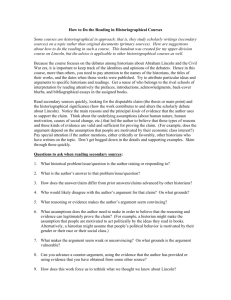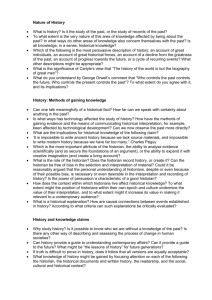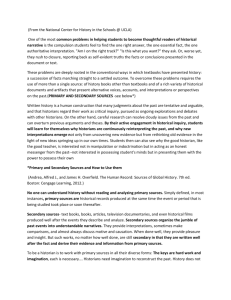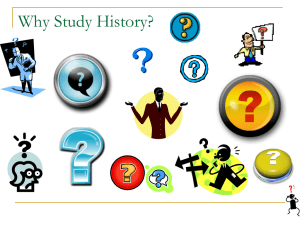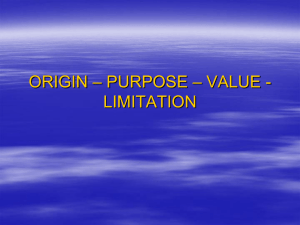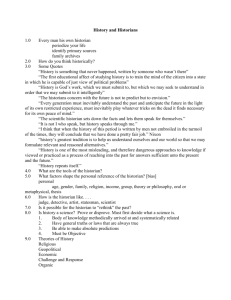W NO. 52 IN THE CENTER FOR WRITING AND SPEAKING
advertisement
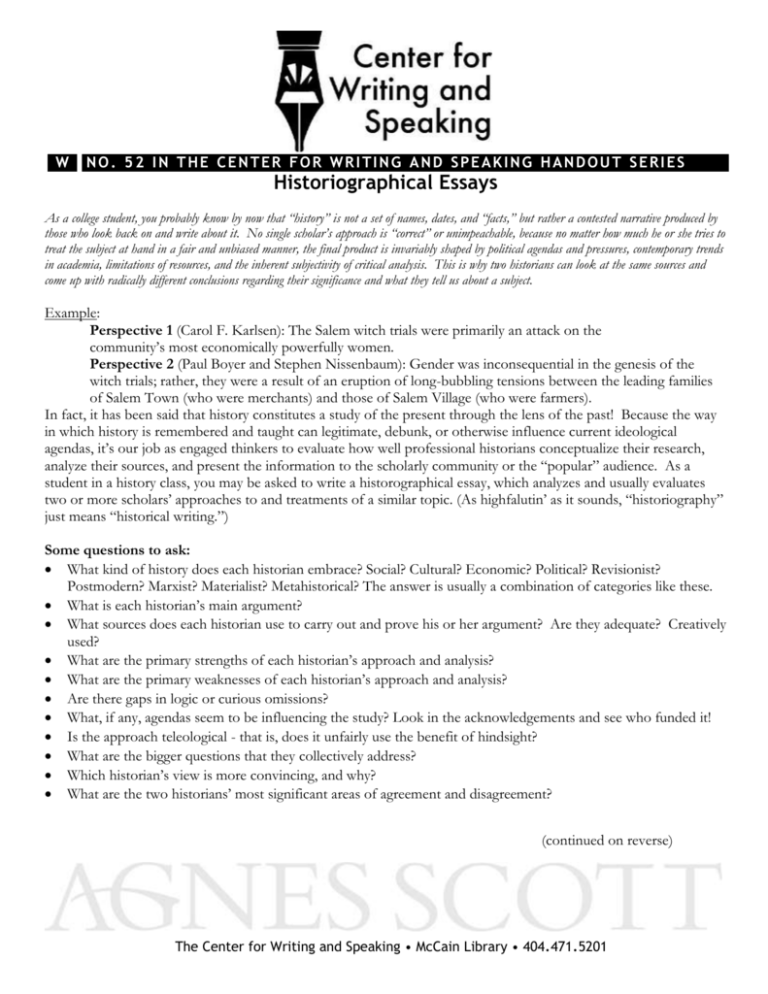
W NO. 52 IN THE CENTER FOR WRITING AND SPEAKING HANDOUT SERIES Historiographical Essays As a college student, you probably know by now that “history” is not a set of names, dates, and “facts,” but rather a contested narrative produced by those who look back on and write about it. No single scholar’s approach is “correct” or unimpeachable, because no matter how much he or she tries to treat the subject at hand in a fair and unbiased manner, the final product is invariably shaped by political agendas and pressures, contemporary trends in academia, limitations of resources, and the inherent subjectivity of critical analysis. This is why two historians can look at the same sources and come up with radically different conclusions regarding their significance and what they tell us about a subject. Example: Perspective 1 (Carol F. Karlsen): The Salem witch trials were primarily an attack on the community’s most economically powerfully women. Perspective 2 (Paul Boyer and Stephen Nissenbaum): Gender was inconsequential in the genesis of the witch trials; rather, they were a result of an eruption of long-bubbling tensions between the leading families of Salem Town (who were merchants) and those of Salem Village (who were farmers). In fact, it has been said that history constitutes a study of the present through the lens of the past! Because the way in which history is remembered and taught can legitimate, debunk, or otherwise influence current ideological agendas, it’s our job as engaged thinkers to evaluate how well professional historians conceptualize their research, analyze their sources, and present the information to the scholarly community or the “popular” audience. As a student in a history class, you may be asked to write a historographical essay, which analyzes and usually evaluates two or more scholars’ approaches to and treatments of a similar topic. (As highfalutin’ as it sounds, “historiography” just means “historical writing.”) Some questions to ask: What kind of history does each historian embrace? Social? Cultural? Economic? Political? Revisionist? Postmodern? Marxist? Materialist? Metahistorical? The answer is usually a combination of categories like these. What is each historian’s main argument? What sources does each historian use to carry out and prove his or her argument? Are they adequate? Creatively used? What are the primary strengths of each historian’s approach and analysis? What are the primary weaknesses of each historian’s approach and analysis? Are there gaps in logic or curious omissions? What, if any, agendas seem to be influencing the study? Look in the acknowledgements and see who funded it! Is the approach teleological - that is, does it unfairly use the benefit of hindsight? What are the bigger questions that they collectively address? Which historian’s view is more convincing, and why? What are the two historians’ most significant areas of agreement and disagreement? (continued on reverse) The Center for Writing and Speaking • McCain Library • 404.471.5201 W NO. 52 IN THE CENTER FOR WRITING AND SPEAKING HANDOUT SE RIES Historiographical Essays, Continued Other guidelines: Don’t just summarize the historians’ analyses – delve beneath the surface! Support your critiques of the readings with specific evidence Consider the strengths and weakness of each piece, but also make an argument about what you think of the topic under consideration given these strengths and weaknesses. For more information on historiographical essays, see: http://www.southalabama.edu/history/faculty/rogers/hgy.html http://www.uky.edu/~popkin/650%20HolocaustSyl_files/Historiographical%20essay.htm The Center for Writing and Speaking • McCain Library • 404.471.5201
